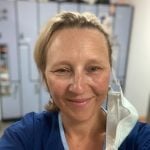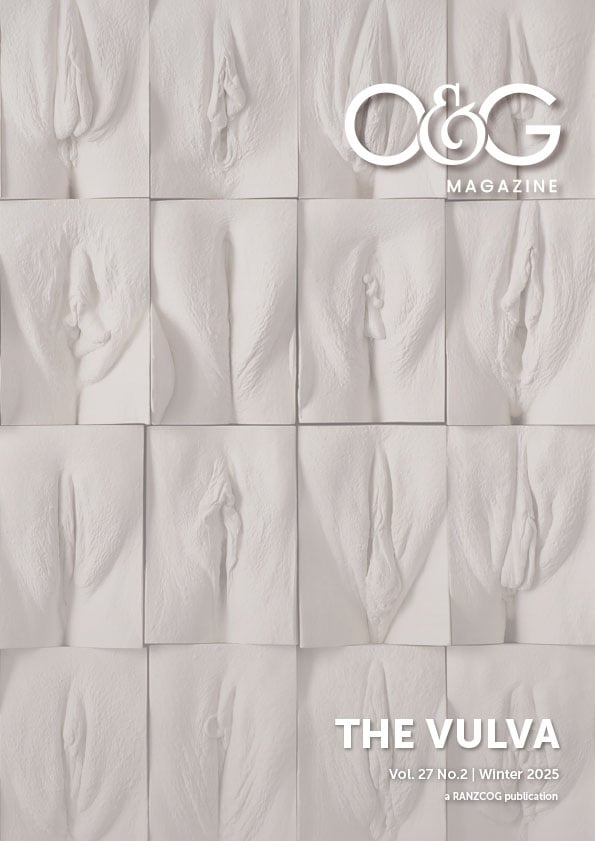OK, full disclosure: reviewing a textbook on Lichen Sclerosus (LS) is something neither of us had done before. Having independently come across this publication (MH via the International Society for the Study of Vulvovaginal Disease (ISSVD) when it was published in mid-2024; MD two weeks ago via Tania), we were both impressed by its delivery and purpose. We hope that we can convey just how fabulous a book on vulval dermatitis can be.
Backstory: we met Dr Tania Day, co-editor of the book, at a recent RANZCOG Council meeting over a discussion about the next issue of the O&G Magazine. By way of introduction, Dr Tania Day MD PhD, is a Newcastle-based RANZCOG and an American College of Obstetricians and Gynaecologists Fellow with clinical and research special interest in vulval disease. You may have previously come across some of Tania’s work if you’ve read and used any patient information on the Australia & New Zealand Vulvovaginal Society website. During our conversation, we discussed Tania’s recently published book on LS and realised that many were unaware of this untapped resource.
We then decided that we would read the 211 pages in a week to provide you with some advice about why you need to download this book.
This book is a free, online resource via ISSVD. It is divided into 16 chapters with sub-headings and yes, you can search for specific terms/pathologies easily. It is contemporary and evidence-based, with appendices brimming with references and discussions of their limitations. The editors have harnessed and skilfully curated specialist opinion on a spectrum of relevant topics on lichen sclerosus. For those with a research interest, the book generously highlights future directions and gaps in the literature. Although contents have been provided by a wide range of experts from across the world, it is skilfully edited and reads seamlessly.
Lichen sclerosus is common. Even if you don’t see much vulval dermatology in your practice, you will inadvertently come across this condition in your daily work. It is often ignored by primary and secondary care and/or misdiagnosed. Early diagnosis and appropriate management can often prevent its many commonplace sequelae (dyspareunia, architectural changes, and dysuria) and improve quality of life for affected individuals. Starting a steroid cream and/or referring appropriately can make a world of difference.
Here are some of our thoughts and impressions after reading and using the advice from this book.
MD: I loved the layout – designed in the way we approach clinical care – so many helpful chapters, great sections about what is not known/limitations of the literature – so different from any textbook I have read in the past decade Highlights for me included the glossary of terms at the back! The biopsy table of techniques! And new terminology and concepts -vaginitides, steroid phobia (notably highest among pharmacists), the difference between moisturisers, emollients and ointments. Great photos of steroid doses on a fingertip to demonstrate doses, helpful algorithm for steroid non responders.
The language is directive and helpful (‘Use of a mirror is associated with an increased sense of control, knowledge, and a desire to use it again during future examinations’ (ref provided)). I also liked their often wry tone ‘Reading the whole pathology report builds familiarity with pathologic vocabulary and diagnostic approach.’
This book taught me how great and full of care a bio psychosocial consult for LS could be and I am so grateful it has been written. Kudos to the editors, authors and ISSVD who have made it free and downloadable.
MH: As someone who sees patients with vulval dermatoses on a regular basis, I’d like to congratulate Dr Day and her co-editors Drs Mauskar and Selk, for this sterling resource. It is 211 pages of pure gold. In addition to providing a comprehensive overview of vulval dermatology fundamentals such as terminology, anatomy and basic pathology, it also delves deeply but succinctly into all the practical aspects of care (how do you know when someone uses too much ointment? What’s the best method of pubic hair removal and menstrual care with women with dermatoses, amongst others). Particular mention must be made to an important inclusion of a separate chapter on LS during the peripartum period and considerations regarding mode of birth – a highly useful and unique resource in our practice.
I admit to having several dermatology and vulval health books on my shelf but these (or certainly the chapters on LS) are beginning to gather dust as I repeatedly reach for this book. Page 77 (how much steroid to use) proudly resides on a wall in my private rooms (a picture is worth a thousand words) and serves as a visual reminder/ reinforcer of the counselling patients receive. This book’s systematic approach has provoked thoughtful reassessment and reframing of some of the presentations I have seen recently.
I have also found this book to be an excellent resource for teaching, and I frequently share it with my trainees. Looking wider, I would love to see an abridged 2-page summary, including the differential diagnosis and treatment algorithms, specifically aimed at general practice. As a minor quibble, both MD and I noted some confusion in terminology particularly in the fast-changing world of species nomenclature (e.g. is it a Candida glabrata or Nakaseomyces glabrata?). A frequently updated living appendix would be an excellent accompaniment to this book and would assist clinicians navigating microbiology reports (without the need to ‘Google’ the species name).
In summary, we highly recommend “Lichen Sclerosus. ISSVD Practical Guide to Diagnosis and Management” – this valuable, comprehensive and up-to-date e-book is a go-to resource in this field.
We cannot wait for a hardcopy version, and we are proud as punch of our colleague Dr Tania Day for putting this together.







Leave a Reply